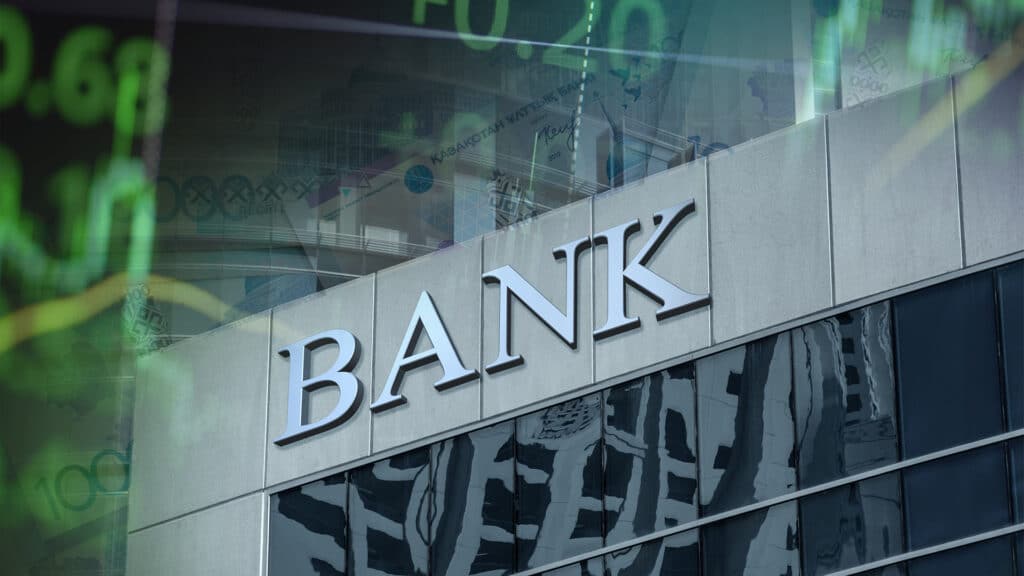Kazakhstani banks are most profitable among similar resource-rich countries

The profitability of Kazakhstani banks’ capital reached a multi-year high of 34.8% in April 2024. This growth was driven by high real lending rates and rising net interest margins [the difference between the average lending rate and liabilities], according to the World Bank survey for June 2024.
«Banks in Kazakhstan have long enjoyed some of the highest profitability rates among similar resource-rich countries,» the WB said in the document.
Bank real lending to the economy increased by 14% in May compared to the same period last year, driven by consumer loans, which contributed 80% of the total increase, while loans to businesses remained weak at 20% of the overall expansion, the WB reported.
Digital platforms have increased financial inclusion and facilitated easy access to consumer loans, which, on the other hand, has raised household debt exposure. Consumers in Kazakhstan mainly take short-term, high-cost loans, while demand for mortgages is declining.
As oil revenue declines, additional sources of funding are needed
Consolidated budget receipts totaled $23.3 billion during the first five months of 2024, remaining almost unchanged from the same period last year.
Oil-related revenue dropped by 11.2% year-on-year, which was offset by increased collection of non-oil taxes (+5.4% year-on-year to $16.9 billion). This growth was supported by better collection efforts and continued economic growth, the WB highlighted.
Budget expenditures were $22.8 billion (+5.5% year-on-year) with the biggest spending increases in interest payments (+36.6%) and infrastructural projects (+22.7%), while spending on industry (-21.3%) and defense (-24.6%) declined.
The consolidated budget realized a smaller surplus of $0.4 billion down from the estimated surplus of $1.6 billion a year ago.
«The surplus was not enough to cover amortization payments due. As a result of greater repayments, gross financing needs increased 4.4 times to $3.3 billion,» the WB said.
Fewer investments hit economic growth
Real capital investment fell 6.5% year-on-year in January compared to a 17.2% increase a year ago. This activity was affected mainly by a decline in foreign direct investments in mining and investments in housing.
Investment in mining contracted by almost 30% year-on-year (13.4% a year earlier). The contraction in housing investment, down 0.6% year-on-year (+4.1%) is attributed to the exhaustion of the national pension fund resources that were previously allowed for withdrawal and used for housing purchases, thereby providing a short-lived boost to the housing market in 2022-2023.
«Overall, weak investment activity over the past 10 years, decreasing from 28% of GDP in 2001-2009 to 17% of GDP in 2012-2022, has been the dominant factor holding back productivity and potential growth,» the WB underlined.
Real GDP growth declines against the backdrop of economic weakening
Domestic trade slowed to 3.1% year-on-year compared to 10.2% last year, reflecting waning consumer demand. Transport and logistics slipped to 7.1% (from 7.7%), agriculture to 1.6% (from 3.5%) and industrial production was the only indicator showing small growth of 3%.
«As a result, we expect real GDP growth of 3.5% year-on-year in the first half of 2024, down from 5.3% in the first half of 2023,» the bank pointed out in its survey.
Inflation was 8.4% year-on-year in June, a slight decline from an 8.5% rise in May. Even though food (+5.4%) and non-food (+7.4%) inflation is gradually easing, inflation in the service sector (+13.8%) remains stable due to robust wage growth in the sector. The base rate was cut by 0.25 percentage points to 14.5% in June. However, the regulator has kept its tight policy approach to further quell inflationary pressure.

